By: Faith Larson, J.D., M.B.A., VP of Business Development & Legal Counsel, Mickelson & Company, Sioux Falls, SD
Mickelson & Company (Mickco) is a privately held company in Sioux Falls, SD, focused on federal and state tax credit advisory services and monetization in both the renewable energy and rail industries. Since 2005, Mickco has worked with over 100 railroad customers to arrange annual transfers with counterparties using the federal 45G tax credit. Until 2023, the 45G tax credit was the only assignable tax credit in the federal tax code. We have developed a strong portfolio of tax credit counterparties to facilitate the conversion of tax credits to cash for those not able to utilize their tax credits internally. We are focusing our initial efforts on making the ethanol industry aware of our expertise and services.
I joined the team to bring Mickco’s expertise and relationships in assignable railroad tax credits to the expanded and newly transferable renewable energy tax credit space. Having spent much of my career as an executive in the agricultural industry, we are focusing our initial efforts on making the ethanol industry aware of our expertise and services.
Section 48 Energy Property
Section 48 provides the investment tax credit (ITC) available for energy property which includes combined heat and power (CHP) systems. The ITC is available for energy property placed in service during the taxable year. The test for whether the energy property is placed in service is the earlier of 1) the year in which depreciation begins with respect to the CHP or 2) the year in which the energy property is placed in a condition or state of readiness and availability for a specifically assigned function, whether in a trade or business or in the production of income.
The Section 48 base ITC rate is 6%. Projects can increase the base rate by a 5x multiplier (30%) by either meeting or being exempt from the prevailing wage and apprenticeship (PWA) requirements. Projects with construction start dates that began before January 29, 2023, are exempt from PWA requirements and automatically are eligible for the 30% rate.
The IRA also provides a bonus credit up to 10% for meeting requirements for domestic content as well as a bonus credit up to an additional 10% for projects located in energy communities. You can earn a maximum credit of 50% if you meet all requirements above or are exempt from PWA requirements and earn bonus credits for both domestic content and energy communities.
We have placed a CHP ITC that will close in the 1st quarter and have strong interest from our investor base to purchase this type of credit at attractive pricing. Please let us know of any plans you have regarding Section 48 Energy Property.
Section 45Z Clean Fuel Production Credit (CFPC)
Section 45Z provides a CFPC for the production of clean transportation fuels, with a focus on reducing greenhouse gas emissions. This CFPC is available for qualifying fuels produced after 2024 and sold on or before December 31, 2027. To qualify, fuel produced must emit no more than 50 kilograms of CO2 (or CO2 equivalent) per 1 mmBTU. The credit is based on your carbon intensity (CI) score and how it compares to the established baseline level of 50 as noted above. The value of the credit is $0.02 cents per gallon for each CI point under 50.
While there are still many unknowns surrounding the CFPC, you should begin preparing to understand your current CI score and how certain investment decisions and practices may impact your score to the positive.
We developed a model to help you assess the value of your CFPC through monetization to aid in your capital allocation decisions.
Section 45Q Carbon Capture Tax Credit
Section 45Q aims to accelerate and promote investment in carbon capture, utilization, and storage (“CCUS”) projects. The IRA further extends the 45Q tax credit that was created and expanded in prior Acts. Notably, 45Q extends the construction deadline for carbon capture until January 1, 2033. The credit is $85 per ton of CCUS, $60 per ton for utilization of captured CO2 to produce low and zero-carbon fuels, chemicals, building materials and other products, or for enhanced oil recovery (EOR).
The IRA provides for a direct-pay option for the first five years, starting with any tax year in which the taxpayer has, after December 31, 2022, placed in service carbon capture equipment at a qualified facility. The direct-pay election must be made in the first year the facility (or applicable equipment) is placed in service. The direct-pay election can be revoked, and such revocation will apply to each year remaining within the five-year period.
For further analysis on direct pay vs. transferability and specific questions, please reach out to us.



